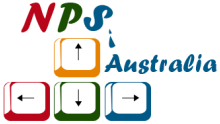MACHINE LEARNING MODEL FOR EARLY DETECTION OF ASTHMA SEVERITY IN ADULTS
At present, asthma diseases have emerged as a major health concern around the world. Identifying asthma in both children and adults as early as possible is crucial for providing timely medical intervention to control the progression of this chronic disease. However, creating an accurate predictive model for asthma in both age groups has proven challenging. Currently, a small specific sample size and low accuracy are attained by the models in the research. For the development of a predictive model that is useful for clinics, limited research was done to analyze a broad population of adults and children. However, significant data was generated by the tele-monitoring of the patients but inappropriate assessment was done to make early predictions on asthma in adults. This research focuses on utilizing the potential of telemonitoring data to construct machine-learning algorithms that help in predicting asthma before manifestation. The main goal of this article ability to understand the efficiency of machine learning (ML) algorithms in opposing asthma-related disease assault, with a focus on “Severity-None”, “Severity-Mild”, and “Severity-Moderate” diseases. This study presents the view of Asthma Disease Prediction (ADP) and explores several clustering and classification strategies that significantly enhance the accuracy of classification, particularly when a training dataset is accessible. Through the use of machine learning clustering and classifiers, such as K-Means methodology, Multi-Layer Perceptron (MLP), Decision Tree (DT), Stochastic Gradient Descent (SGD), and Naive Bayes (NB) algorithms. we categorize instances as either indicative of a good or bad condition. Consequently, our classification models demonstrate high accuracy in predicting asthma disease outcomes.
